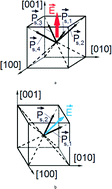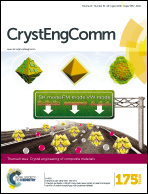Advanced composites based on relaxor-ferroelectric single crystals: from electromechanical coupling to energy-harvesting applications†
Abstract
Domain-engineered relaxor-ferroelectric single crystals with compositions near the morphotropic phase boundary are considered as a key component for modern high-performance piezo-active composites. The advantages of using the relaxor-ferroelectric single crystals of solid solutions of (1 − x)Pb(Mg1/3Nb2/3)O3 − xPbTiO3 and (1 − y)Pb(Zn1/3Nb2/3)O3 − yPbTiO3 in piezo-active composites of 2–2 and 1–3 configurations are discussed by taking into account the complex relationships between the outstanding properties of the components and the effective parameters of the composite structure as a whole. Examples of their high piezoelectric activity, strong electromechanical coupling, large piezoelectric anisotropy, and large hydrostatic parameters of the composites demonstrate how the relaxor-ferroelectric single-crystal component improves the effective parameters and promotes the formation of non-monotonic volume-fraction dependences of particular effective parameters that are of interest for a variety of piezotechnical applications, such as transducers, sensors, hydrophones, and energy-harvesting devices.

- This article is part of the themed collection: Crystal engineering of composite materials

 Please wait while we load your content...
Please wait while we load your content...